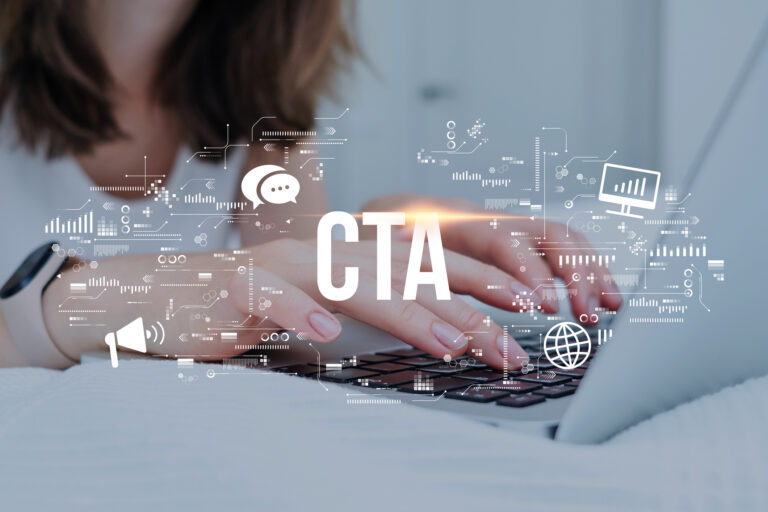Ever stared at a blank screen wondering how to start an email that actually gets results? You are not alone. Writing emails that drive clicks, sales, or replies is tough, but it gets a lot easier when you follow proven copywriting formulas.
In the world of email marketing, the structure of your message can be just as important as the content itself. That is where copywriting formulas come in. These formulas give you a clear framework to follow, so you are not guessing what to write next.
Whether you are launching a product, promoting a sale, or nurturing leads, using the right formula can help you boost conversion rates and keep your audience engaged. In the following guide, we’ll discuss six of the most effective email formulas used by copywriters and marketers, and how you can use them to improve your email campaigns.
Just getting started? These formulas are especially valuable when you’re launching your first email campaign. Instead of staring at a blank screen wondering what to write, you’ll have a proven structure that guides every line—from subject line to call-to-action.
1. SLAP (Stop, Look, Act, Purchase)
The SLAP formula is a straightforward structure that grabs attention, holds interest, prompts action, and leads the reader to complete a purchase. It moves the reader quickly through each stage without unnecessary distractions.
- Stop: Grab their attention with a bold subject line or opening sentence.
- Look: Make them pause and take in your message with compelling copy or visuals.
- Act: Direct them to take the next step with a clear call to action.
- Purchase: Make it easy to buy or sign up with a simple link or button.
Example of SLAP
Subject: Last day to save 30 percent
Header: Still thinking it over?
Body: Our biggest sale of the season ends tonight. Do not miss your chance to grab your favorites at a huge discount.
CTA: Shop Now
When to use it:
The SLAP formula is a great fit for short-term promotions, flash sales, limited-time offers, or last-chance reminders. It is especially effective when your audience is already familiar with your brand or product and just needs a quick nudge to take action.
2. ACC (Awareness, Comprehension, Conversion)
The ACC formula is a clear, educational structure that guides the reader from first learning about a topic to understanding its value and finally taking action. It helps you build knowledge step by step while keeping the message focused and easy to follow.
- Awareness: Introduce the topic and why it matters.
- Comprehension: Break it down so the reader understands the value.
- Conversion: End with a clear offer or action.
Example of ACC
Subject: Introducing Our New Booking System
Body: We know scheduling can be a hassle. That’s why we created a new booking system that saves you time. It takes less than 60 seconds to reserve your spot, and no account is needed.
CTA: Try It Now
When to use it
This formula works well when your goal is to educate first and convert second. It is especially useful for SaaS updates, service announcements, product features, or anything that requires explanation before action.
3. The 4Cs (Clarity, Conciseness, Credibility, Consistency)
The 4Cs formula is a writing quality guideline that helps you craft stronger, more effective messages. It focuses on making your emails clear, brief, trustworthy, and aligned with your brand voice.
- Clarity: Make your message easy to understand.
- Conciseness: Get to the point quickly.
- Credibility: Back up your claims with facts, testimonials, or social proof.
- Consistency: Match your tone and messaging with your brand.
Example of the 4Cs
Subject: Need faster shipping?
Body: We now offer 2-day delivery for all US orders. Thousands of happy customers already love how fast we deliver. You will too.
CTA: Start Shopping
When to use it
The 4Cs can be applied to any type of email. Use this email formula to polish your copy, build trust, and make sure your message is clear, on-brand, and easy to act on.
4. AIDA (Attention, Interest, Desire, Action)
AIDA is a classic copywriting formula that guides the reader through a natural flow, from the moment they notice your email to the moment they take action. It helps structure your message in a way that grabs attention, builds curiosity, creates emotional pull, and encourages conversion.
- Attention: Hook them with a strong subject line or headline.
- Interest: Give them a reason to keep reading.
- Desire: Show them how your offer benefits them.
- Action: Invite them to take the next step.
Example of AIDA
Subject: Say goodbye to late invoices
Header: Tired of chasing payments?
Body: Our invoicing tool automates reminders and tracks payments for you. Less stress means more time to grow your business.
CTA: Try It Free
When to use it
AIDA is one of the most effective email marketing formulas for promotions, product launches, and time-sensitive campaigns. It is a strong choice when you want your copywriting to sell by keeping readers engaged from start to finish.
Pro tip: AIDA works even better when combined with proven copywriting techniques.
5. PAS (Problem, Agitation, Solution)
PAS is a copywriting formula that taps into emotion. It highlights a specific problem your audience is facing, builds tension by showing the impact of ignoring it, and then introduces your offer as the solution. This approach is especially effective in email marketing when your goal is to connect with the reader’s real challenges.
- Problem: Call out a specific issue the reader might be facing.
- Agitation: Dig into the consequences or frustrations of that problem.
- Solution: Present your product, service, or offer as the fix.
Example of PAS
Subject: Still struggling with social media?
Body: It is tough to keep up with posts, comments, and content ideas. Falling behind can cost you customers and visibility. Our content calendar makes planning and posting simple—no stress, no guesswork.
CTA: Download the Free Template
When to use it
PAS is a strong fit for emotionally driven email copywriting, especially in coaching, consulting, or service-based offers. It helps you speak directly to the reader’s pain points and offer a clear path forward.
6. FAB (Features, Advantages, Benefits)
FAB is a product-focused email marketing formula that helps you explain not only what your product includes, but also why it matters to the customer. It moves from basic features to real-world benefits, helping the reader understand how your offer improves their experience.
- Features: What the product includes.
- Advantages: Why are those features useful?
- Benefits: How will the user’s life be better as a result?
Example of FAB
Subject: Meet your new favorite water bottle
Body: Our bottle is made with triple-layer insulation (feature), so your drink stays cold for up to 24 hours (advantage). That means you stay refreshed during long workouts or busy days (benefit).
CTA: Shop the Collection
When to use it
FAB is ideal for email copywriting that promotes a specific product or tool. It works well in ecommerce campaigns, newsletters, and feature spotlights where you want to clearly show value without sounding overly sales-focused.
Putting These Email Formulas To Work
The bottom line is that using these formulas does not mean your emails have to feel scripted or robotic. Instead, these structures give your writing purpose and flow. You still bring your brand voice, your audience insights, and your goals to the table, but now you have a proven way to guide readers toward taking action.
Here are a few ways to start using these email formulas in your next campaign:
- Try using AIDA for your welcome sequence or launch announcements.
- Use PAS when addressing common customer pain points.
- Apply FAB to product emails or promotional offers.
- Combine SLAP with urgency-based subject lines for flash sales.
- Lean on ACC for feature releases or service updates.
- Apply the 4Cs across all your emails to improve writing quality.
Building complete email campaigns? These formulas work best as part of a strategic customer journey. Learn how to string multiple emails together for maximum impact: Build Email Customer Journeys That Convert.
Whether you are new to email marketing or want to sharpen your email writing skills to increase conversion rates, these email formulas are reliable tools that can lead to better results. With practice, you will start to recognize which structure works best for different goals, and that is how your email marketing starts to sell.
Want to level up your copywriting even further?
Now that you have formulas to structure your emails, enhance them with advanced techniques and real-world examples:
✍️ 9 Copywriting Tricks That Sell — Master persuasion principles that work hand-in-hand with these formulas. Learn how to use specificity, overcome objections, and reframe pricing in ways that boost conversions.
📧 Email Marketing Examples 2025 Guide — See these formulas in action. Study real campaigns from top brands and discover which structures they use for welcome emails, abandoned carts, seasonal promotions, and more.
Together, these resources give you both the framework (formulas) and the finesse (tricks + examples) to write emails that consistently convert.
Ready to craft emails that convert with proven copywriting formulas? Start with Nova Express to create targeted, high-impact email campaigns that drive action and boost sales!
Frequently Asked Questions About Email Copywriting Formulas
What is the best email copywriting formula for beginners?
AIDA (Attention, Interest, Desire, Action) is the best starting formula because it’s simple to follow and works for most email types. It guides readers naturally from noticing your email to taking action.
How much can copywriting formulas improve email conversion rates?
Using proven copywriting formulas can improve email conversion rates by 20-40%. The structured approach helps create clearer calls-to-action and better reader flow compared to unstructured emails.
Which email formula works best for sales promotions?
SLAP (Stop, Look, Act, Purchase) is most effective for sales promotions and flash sales. It creates urgency and moves readers quickly to purchase without unnecessary distractions.
When should I use the PAS formula in emails?
Use PAS (Problem, Agitation, Solution) when addressing customer pain points or selling services. It’s particularly effective for coaching, consulting, and service-based businesses where emotional connection matters.
Can I combine different email copywriting formulas?
Yes, you can combine formulas strategically. For example, use AIDA for your main message structure while applying the 4Cs (Clarity, Conciseness, Credibility, Consistency) to polish your overall writing quality.
What’s the difference between AIDA and PAS formulas?
AIDA focuses on grabbing attention and building interest, while PAS starts with identifying problems and creating emotional tension. PAS is more problem-focused, AIDA is more benefit-focused.
How do I choose the right formula for my email campaign?
Consider your goal: use SLAP for urgent sales, ACC for educational content, PAS for problem-solving services, FAB for product features, and AIDA for general promotions or launches.
About the author
Serafima Osovitny is a content and email marketing specialist at Nova Express. With over 10 years of experience in content creation and a cross-industry perspective, she shares insights about email marketing and e-commerce. In her free time, she enjoys traveling and exploring bookstores. Follow her on Twitter: @OSerafimaA.









Leave a Comment